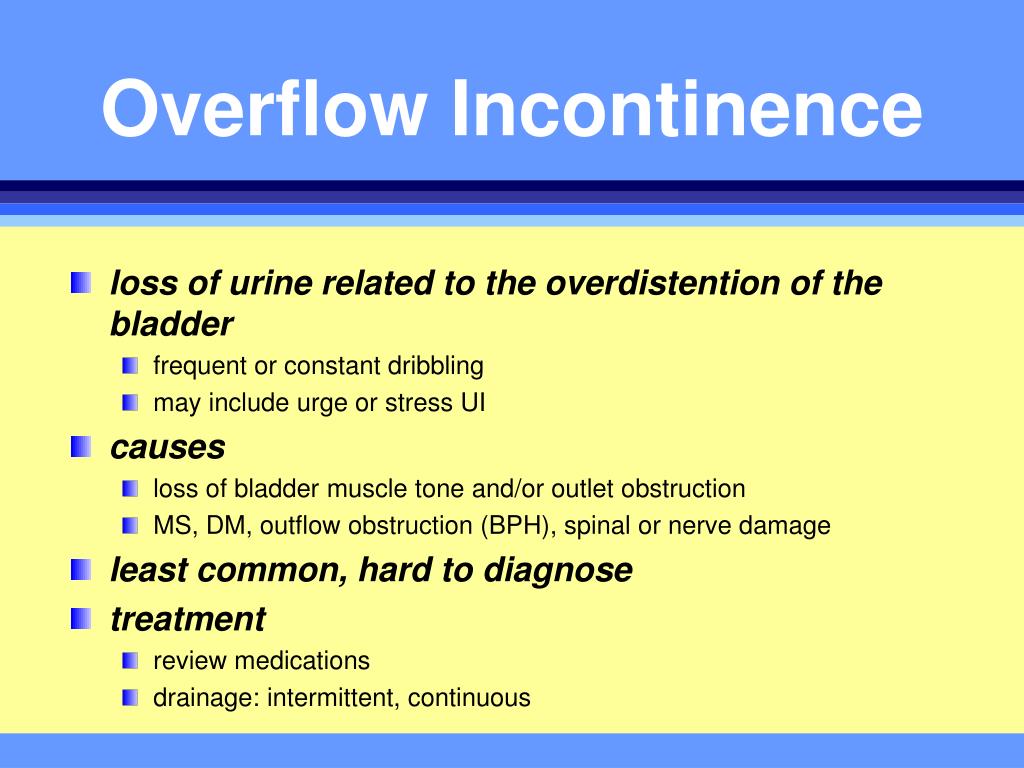

32, 45 Overly aggressive fluid restriction should be avoided because of potential adverse effects of headaches, constipation, and thirst. It is reasonable for physicians to counsel patients on appropriate fluid intake, 32, 40, 42, 43 timed voiding, 32, 44 reduction of caffeinated and carbonated beverages, 32, 40, 44, 45 smoking cessation, 32, 44 regular moderate physical activity, 32 and weight loss if patient is overweight or obese. Vaginal estrogen (estradiol, estrogen ) ‡ĭespite low-quality evidence to suggest that lifestyle interventions improve UI, these interventions are inexpensive with low risk of side effects. Periurethral injections of bulking agentsĮlectrical stimulation (percutaneous tibial nerve stimulation)Ĭombination of above treatments with focus on dominant symptoms Pelvic floor muscle strengthening (Kegel exercises, pelvic floor muscle training) Mechanical devices (vaginal inserts, urethral plugs) 20 The 3 Incontinence Questions ( Figure 1 13, 21 ), the International Consultation on Incontinence Questionnaire Urinary Incontinence Short Form ( Figure 2 22 ), 23, 24 and the Revised Urinary Incontinence Scale (available at 25 have good sensitivity, validity, and are easily completed in a primary care setting to screen for UI symptoms and the effect that UI has on QOL.Įlectrical stimulation (home electrode-stimulation therapy of the vagina or anus) The measure does not require universal screening it is scored on the percentage of members who reported having urine leakage in the past six months and have discussed their symptoms and treatment options with a health care professional. The National Committee for Quality Assurance lists Management of Urinary Incontinence in Older Adults as a Healthcare Effectiveness Data and Information Set measure based on responses to the Medicare Health Outcomes Survey.

19 No other major organization recommends screening for UI. The Women's Preventive Services Initiative recommends annually screening for women of all ages, including adolescents, for UI despite low-quality evidence for accuracy of screening methods and insufficient evidence regarding the effectiveness of screening in improving symptoms, QOL, and function.

Patients with refractory symptoms should be referred for more invasive management such as mechanical devices, injections of bulking agents, onabotulinumtoxin A injections, neuromodulation, sling procedures, or urethropexy. Pharmacologic therapy for urge incontinence includes antimuscarinic medications and mirabegron. Food and Drug Administration for treatment of stress incontinence. Pelvic floor strengthening and lifestyle modifications, including appropriate fluid intake, smoking cessation, and weight loss, are first-line recommendations for all urinary incontinence subtypes. A step-wise approach to treatment is directed at the urinary incontinence subtype, starting with conservative management, escalating to physical devices and medications, and ultimately referring for surgical intervention. Urinalysis should be ordered for all patients. Helpful tools during initial evaluation include incontinence screening questionnaires, a three-day voiding diary, the cough stress test, and measurement of postvoid residual. Initial evaluation should include determining whether incontinence is transient or chronic the subtype of incontinence and identifying any red flag findings that warrant subspecialist referral such as significant pelvic organ prolapse or suspected fistula. No other major organization endorses screening. The Women's Preventive Services Initiative is the only major organization that recommends annual screening for urinary incontinence in all women despite low to insufficient evidence regarding effectiveness and accuracy of methods. Urinary incontinence is a common problem among women worldwide, resulting in a substantial economic burden and decreased quality of life.


 0 kommentar(er)
0 kommentar(er)
